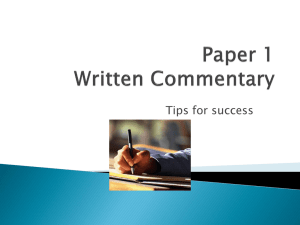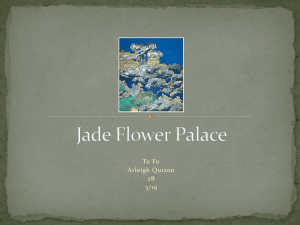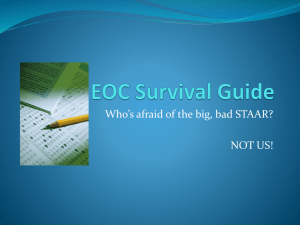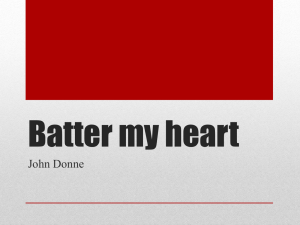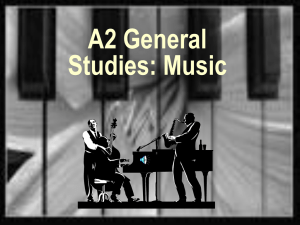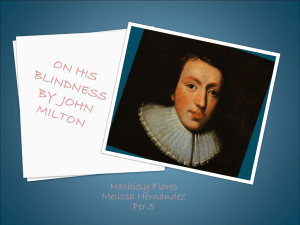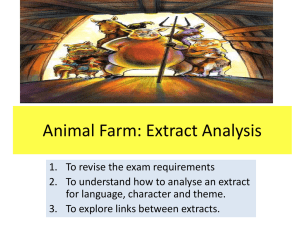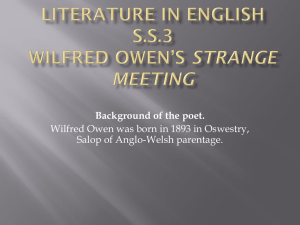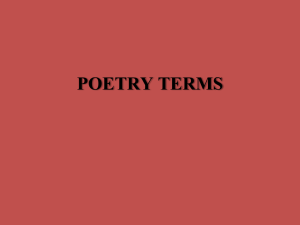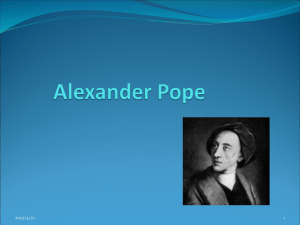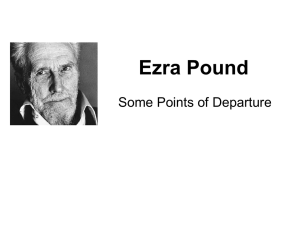Paper 1 - Unseen commentary - tips
advertisement
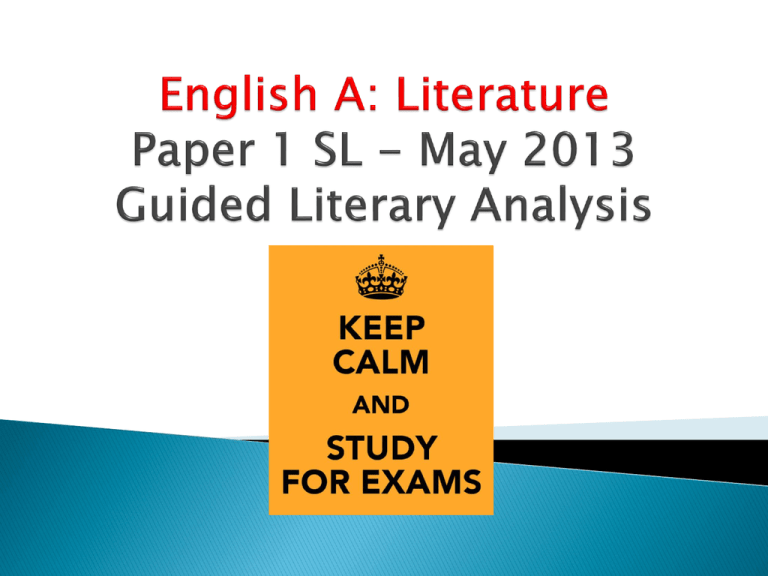
First exam Thursday 2nd May 2013 Timing Standard – 1 hour 30 minutes A poem and prose passage. You must choose one. Read both. Then choose. Prose Either a An extract from a novel or short story An essay A biography A journalistic piece of writing A play Normally excerpts are from novels and short stories. Other forms chosen will have techniques used by writers which are common in novels and short stories e.g. Use of comparison, similes, metaphors. Be prepared for a challenging prose extract – think diary entry, essay, journal extract. Whole range of poems used. A lot are modern and use free verse However some are pre 20th and 21st century – glossaries often given. Look at title and collection it is taken from for clues. Sometimes they give a date. Older ones are likely to use a set structure for stanzas and rhythm. Never read too much into title of collection e.g. ‘Daughters of Africa’- poem called ‘Points of View’. The poem was about the role of water and how we view it – nothing essentially to do with the title. If the poem is long the examiner will consider this when marking.e.g. ‘Child and Insect’ – Standard 2005 May They will then not expect candidates to examine every aspect of the poem but to be selective. 5 minutes reading time – read prose carefully – if standard reading guiding questions before you start to read each piece. 5 minutes – read poem carefully. Weigh it up carefully , but also consider which form you have had success with previously. Once you have selected your text, read it through once again making annotations. Standard Reading /annotation – 5 minutes of reading time and 10-15 minutes. Planning – paragraph by paragraph – 5-10 minutes. You must address the guiding questions Start writing after 2025 minutes . Higher Reading /annotation – 5 minutes of reading time and 15/20 minutes . Planning – paragraph by paragraph – section by section – 10 minutes Start writing after 30 -35 minutes- no GQs – so prep takes longer. FOUR ASSESSMENT CRITERIA A. Understanding and Interpretation How well does the student’s interpretation reveal understanding of the thought and feeling of the passage? How well are ideas supported by references to the passage? FOUR ASSESSMENT CRITERIA B. Appreciation of the writer’s choices To what extent does the analysis show appreciation of how the writer’s choices of language, structure, technique and style shape meaning? FOUR ASSESSMENT CRITERIA C. Organisation How well organized and coherent is the presentation of ideas? FOUR ASSESSMENT CRITERIA D. Language How clear, varied and accurate is the language? How appropriate is the choice of register, style and terminology? (“Register” refers, in this context, to the student’s use of elements such as vocabulary, tone, sentence structure and terminology appropriate to the task.) You must read the text carefully at least 3 times to do well in this. Example 1 – Your mock paper of Jan 2013 – Ballad of Birmingham. Some students seemed to think the event taking place was a war…not a freedom march! Eek! Example 2 – The prose extract – The Jade Peony. some students refusing to acknowledge that the mother described in the opening of the extract is in fact dead. . Do not look at a text, come up with a personal interpretation and let it control your whole commentary. Example – Ensure that you are basing your ideas on concrete evidence in the extract you have chosen. DO NOT make wild estimates. Think about the purpose, stylistic features and the audience being addressed. Misinterpreting the meaning of words in the prose or the poems. Re-read the extract if you are unsure! Literary texts can be interpreted in different ways. There is often a surface meaning and a deeper meaning. The wording in this category includes – the candidate’s ideas are relevant and include a personal response. As an ‘examiner’ I come across interpretations I had not seen or considered. If they were defended (using quotations too) and relevant I awarded them. Points for prose Identify the genre of the extract –diary, journal, essay, memoir etc Who is the implied reader? The audience? A speaking/narrative voice? Omnipotent? subjective? Characterisation Idioms Themes Choice of diction - Use of metaphor, simile, personification, onomatopoeia – perhaps even semantic fields e.g. The use of sea imagery Syntax Paragraphs/structure Suspense, tension, conflict Creation of atmosphere Use of dialogue/narrative Listing These are not in isolation e.g. The use of a particular metaphor may create an atmosphere or tone to the piece. This is organisation of your ideas and how well supporting examples are integrated into the body of the commentary. If you feel safer go for a line-by-line approach or section by section. If you are confident and in the past have been successful try a different approach. Standard students can use a response to the guiding questions as a plan. Remember you can delete sentences/phrases when you proofread at the end You MUST answer the guiding questions provided Your essay should have clear topic sentences and seamlessly embedded quotations to support your ideas. The end of your paragraphs should have clear linking sentences. Keep your quotations bite-sized! You should also consider referring to line numbers in the extract if you are analysing a specific section i.e. lines 8-9 of the extract examines the list of events a whale seems to go through. Prose passage – consider the development of the extract but also try to examine the extract organically. Making connections between the opening and closing lines of the prose. Poetry - chronological order of analysis is satisfactory but the stronger responses would think about the way the poet constructs the poem. Think about moving around the poem and making connections. May 2005 – ‘The Loom’ by Sasaki The progression of colours (B) throughout the extract and the narrator’s appeal to our senses (A/B) brings the reader closer to the actual experience that the mother’s loom weaves ( A). The mother begins weaving with the ‘subdued and muted colours she liked ’. So instantly the colours symbolise her character and emotions ( B). The word ‘subdued’ is one that can be ascribed to a state of mind. The writer’s use of ‘muted’ is interesting as the mother says nothing throughout the extract. (B) (A) – Understanding and interpretation (B) – Appreciation of the writer’s features ‘In the Rear-View Mirror’ by Shaw – Nov 2008 The structure of the poem is particularly significant as it links to the speaker’s view that images are stored in our memories. The first word ‘thinking’ in the opening line; ‘Thinking about them as you saw them last’ pinpoints that the poem will be a reflective/contemplative piece . The rest of the line highlights that the narrator is analysing his memory of the ‘last’ time he saw his parents. At the conclusion of the poem Shaw replicates the line but changes ‘last’ to ‘lasting’. The subtle change in tense implies his memory will be ongoing. Language is very clear, effective, carefully chosen and precise, with a high degree of accuracy in grammar, vocabulary and sentence construction; register and style are effective and appropriate to the task. No notes / shorthand No colloquialisms/slang/informal speech Spelling/use of capital letters/grammar must be accurate. Keep the register formal e.g. always use present tense for literature Single markers around poem titles and quotations Do not over think your language use and over edit making the sentences difficult to read for the examiner Do not squash your words together on the line For long quotations – set out lines as they appear in the poems – indent and put on a new line Select words carefully Do not write in a elevated fashion unless terms are accurate
